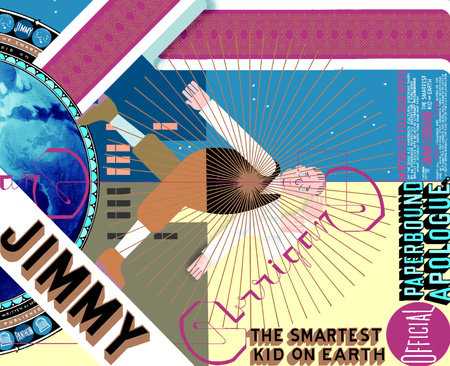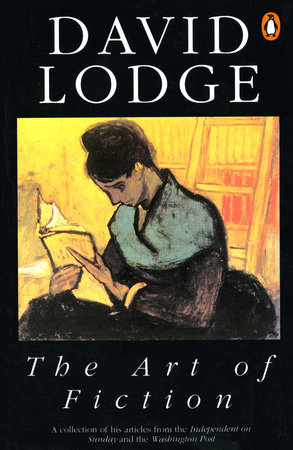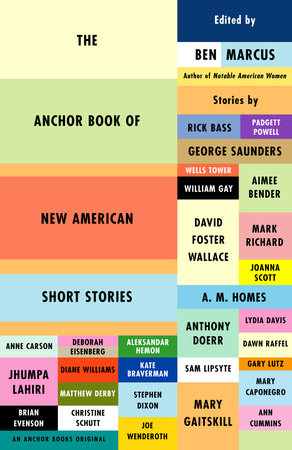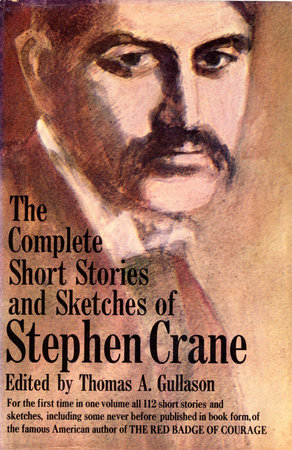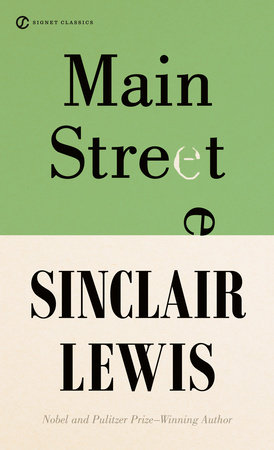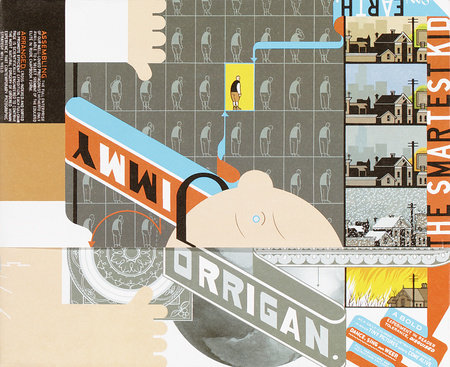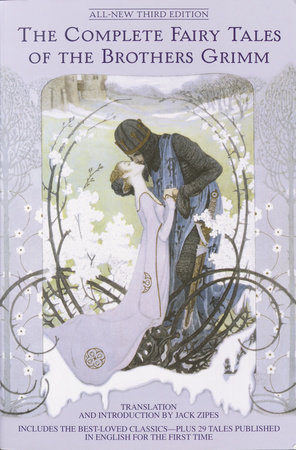Author Q&A
A Conversation with Chris Ware, creator of JIMMY CORRIGAN: THE SMARTEST KID ON EARTH
Q: How did you start reading comics?
A: I guess my earliest “exposure” to them would’ve been at my grandparents’ house. My grandfather was one of the first newspaper editors to add the Peanuts strip when it was first offered — he and my grandmother remembered sitting at the dinner table, reading over the sample tearsheets he’d brought home from work and “laughing like crazy” at the “new kid strip.” I guess my grandfather’s childhood interest in being a cartoonist himself had prompted him to carefully consider what cartoons he added to the paper, and I think even my grandmother had said that both she and he had agreed years later that Peanuts had been “the last good strip” he’d bought.
Anyway, as the result of this “flagship” status with Peanuts, he received complimentary copies of all the Schultz collections from the syndicate for years thereafter. They were all in a line on a shelf in the basement, and I read every one of them, over and over again. They had an indisputable “life” to them, especially the Sunday strips. Those characters felt real to me. I remember loving the drawing in them, especially the backgrounds, and the little details, like where Charlie Brown is looking through the “comic magazines” at the drugstore and all the titles on the books are legible. I’d stare at those strips for hours, losing myself in them.
But I wasn’t immune to the temptations of lesser material. Tucked away farther back in the basement was a stack of comic books leftover from my older cousins. They were mostly 1960s DC comics like Batman and Sugar and Spike, and Superman and Jimmy Olsen. I guess those may have been the first ones I ever read. Once I started getting into those, though, I couldn’t stop. Somehow I got quickly hooked into the superhero “ethos,” and I latched onto that, though I wish now that I hadn’t. I suppose I was just too much into wish-fulfillment at the time, because I was a skinny geek. If only I’d had the integrity and sophistication to be a “Harvey” kid. There seem to be two different kinds of male comics readers — the ones who read Harvey comics and those who read superhero comics. Unfortunately, I came from the wrong background.
Q: How did you develop your drawing skill?
A: Well, when I was a kid, my Mom signed me up for art lessons at the Joslyn Art Museum in Omaha, which I attended for a number of years. I distinctly remember being amazed by Leonardo da Vinci’s drawings — which I’d seen in a book there, obviously — and wanting to learn how to draw just like him. Also, I used to tune into this program every week on PBS which was one of those “Let’s Draw!” shows with some weird foreign guy talking about [does the voice] “How fun it is draw! Taking these shapes and making our Secret City!” I actually learned quite a bit about shadowing and space from that fellow’s show. I love it, and dutifully kept a notebook just like he told me to. And then, of course, I copied from comic books. In college, I took life drawing classes all through graduate school, even though you’re only supposed to take them your first year because once you do your little “classical” bit, you can move onto real art.
Q: So you cheated.
A: Well, I believe that there’s no substitute for actually looking at a human figure for just a few hours a day and trying to draw it. It’s trying to learn how to see, and that’s what drawing is about. There’s nothing to substitute that exercise of learning to look. Even if I weren’t utilizing drawing as part of what I did — if I was just a writer — I would still draw from life.
Q: When you were at the University of Texas in Austin, your first strips were published. You did both a daily and a weekly strip. Were you doing them simultaneously or did you move from one to the other?
A: I was basically shifting back and forth. I started out doing a weekly, and then I went to doing a daily. And then I went back to doing a weekly. There may have been times when I did a weekly here and there while I was doing the daily, but I never could do them simultaneously. My friend John Keen actually did them simultaneously, and when I saw what that did to his mental state, I didn’t want to try to do that.
Q: Committing yourself to doing a strip for publication is a lot different than doing your own little strips at home. What gave you the impetus to make that leap?
A: It was essentially just dumb luck. I had taken some commercial art classes in Texas in high school my last three semesters. At that time, I didn’t even know necessarily what art was. I just sort of assumed it was advertising art, or illustration or that sort of thing, which was not unrelated in my mind to comics.
When I went to college, I decided that I wanted to continue to draw comics in the grand Heavy Metal/Dalgoda tradition — you know, “smart comics” — so I signed up for English classes and art classes, but I also applied for work at the student newspaper there as an illustrator. I got hired as a graphics assistant and started just doing little things, like illustrations for articles about winemaking and student protests and then the art director, Mark Green — I’m trying to remember this exactly — started doing a weekly strip, and somehow it filtered through to the editor of the weekly arts and entertainment section that I wanted to draw cartoons, too, or I was drawing cartoons, and she asked me to do a strip as well.
Q: In your second year in college, Art Spiegelman called you. Had you, by the first or second year of college, seen RAW or other contemporary work?
A: Yes, it was just a matter of getting tired of the adolescent science fiction stuff and moving to things that seemed a little more interesting or sympathetic or weird. And RAW was definitely one of those things that I specifically remember being weird. It was Charles Burns’ strips that really grabbed me initially, and then Maus for its directness. Maus was about something even I could handle as being serious. I even remember starting on a series of pamphlets in Maus format when I was 17; it had fired me up so much. At that time I decided to try and do comics that had a truly “serious” tone to them. I had already had my heart stomped a couple of times and I realized that art could provide more than just cool drawings and spaceships. RAW was the first comic book that I read that followed through on that idea completely, in both the images and the writing. I mean, what else are you going to think when you see Gary Panter’s stuff? I remember being really emotionally affected by RAW magazine, once I finally actually started looking at it.
Q: You did two strips for RAW. One of the strips was done specifically for RAW and one was adapted from a strip you did for the Texan.
A: When Art Spiegelman called me in 1987 — and this was long before I did the strip for RAW — he was very, very complimentary and said that he’d seen my stuff in a sidebar story to a review of Maus in an Austin paper, and he asked me to send him more of it. I did. Of course, I was blown away that he would have called me or that he would consider calling someone of my age and obvious lack of ability. And over the next couple of years he would telephone occasionally and encourage me, or tell me what he thought of the junk I’d been sending him. These conversations were incredibly important to me, probably more so than any other “student/teacher” relationship I had in school, because I respected his work so much. Then he asked me to contribute to RAW. Of course, I was terrified. I had months to do the strip but I kept putting it off, and putting it off. I wanted to do the BEST THING I’D EVER DONE, and of course I couldn’t do anything. I ended up just redrawing a strip he said he’d liked and which I was fairly proud of, which was a terrible mistake. And now when I look at it I just can’t bear it. It’s just awful. I think I ruined the strip. I overthought it. The drawing looks like a bad editorial cartoon or something.
Q: What distinction do you make between real drawing and cartooning?
A: I think drawing is about — or at least good drawing is about — trying to see. It’s more about detail and looking, whereas cartooning is making a story happen with symbols. Does that make sense at all?
Q: I think I know what you’re saying.
A: And cartoon drawings are — just by nature of how they’re used as symbols — in a lot of ways not really drawings, because the information that they have is so rudimentary, or conceptual. Josst Swarte’s “drawings” are a good example of this idea. He’s about the only cartoonist I can think of who’s pushed cartooning to this sort of level. But I try to use “real” drawing occasionally, or sort of a looser drawing, as a way of anchoring a sense of place or a feeling. By either floating it below or above the story it seems to take on this sort of tonal quality, like a long note held, and that’s a lot of the sort of thinking that went into that particular page, I guess. That page anticipates the three pictures at the bottom of each strip.
Q: Let’s talk about Jimmy Corrigan, the strip you began to draw in 1992. This is an incredibly detailed history of four generations of the Corrigan family. But, the only faces we ever see are Jimmy’s and his dad’s. Why is this?
A: It is a sort of cheap answer to a problem that I think is somewhat real for comics. In a story told only in words, there’s an inherent flexibility regarding where the reader is in space and time, or who the narrator is. You can navigate through any character’s mind, or you can suddenly become omniscient, whereas in comics you’re always looking at something. Your spot in space is clear, but always outside of the frame, and your sense of empathy is dissolute, which, of course, can be a strength. But I wanted to be sure, at least in this story, that the “empathies” of the reader were clearly with the main character’s face, that feeling or tone was ruined. I don’t know. I mean, there’s probably a ton of cartoonists who would just guffaw at this. I may be — I don’t know — damaged or something, but simply showing every character’s emotional reaction instantly seems to limit the potential for any subtlety of feeling. Adults lie with their faces. The comic strip language is not sophisticated enough yet to deal with that fact. Every guidebook to cartooning always advises you to learn how to draw facial expressions, as if there’s some direct analogue to be found in how people move their faces and how they feel. There may be some connection in children, but not in adults. Depending on the social context, adults usually adopt expressions to suit their environment. Not that you can’t represent all of this simultaneously, or show real expression, but it muddles the subjectivity in what is essentially, at least right now, a presentational medium. Does that make any sense at all?
Q: You referred to using words, and I’m curious as to the lineage of how you learned to write comics. Were there any writers that influenced you, comics writers or prose writers? Obviously, you have a very distinctive style of dialogue that I can’t think of anyone similar.
A: It’s just an attempt to try to get a sense of real conversation on the page. Observation, I guess. More of what I get from writers would be sort of a constitution, or a sense of purpose, which is weird because I’m always ripping off visual ideas from other cartoonists. But from writers I get a feeling of allegiance, like, “Yeah, it’s hard. But keep plugging away.” There are specific things, too, for example with Tolstoy, and his ability to create such a specific sense of place, of naturalism, seemingly effortlessly. I guess the most overarching “literary” influence might be my grandmother, and the manner in which she used to tell stories. I could sit for hours and listen to her talk, something which I did as much as I could for the last few years of her life. Her “eye” for detail, and her sense of life, and her generosity were all very affecting. Only as I’ve gotten older have my suspicions been confirmed that she was a very extraordinary person, as I’ve met no one like her yet.
Q: You know, talking about writing when you’re talking about comics is a little treacherous because I tend to think you write with pictures as well as with words, so there’s no easy demarcation there.
A: Oh definitely. That’s what comics are. If you are writing a script beforehand, you’re not really writing comics. You’re illustrating a story. That’s a generalization of course, and there are cartoonists who work that way. For example, Dan Clowes told me that he did “Caricature” as his first edited and thoroughly-plotted narrative, and that’s one of his best stories done in comics.
Q: He’s fortunate in that his mind is doing both. In other words, there’s not a writer writing something and giving it to an artist. Now, when you conceive of a story, do you think of it in visual terms or in verbal terms?
A: I really don’t know, actually. I tend to think of it in all sorts of different ways. I guess more visually. I guess images flash into my mind, they might get transferred into words. If I have something else and that occurs to me and I don’t want to forget it, I’ll write it down. I don’t know. This is all hideously embarrassing. I mean, any real writer that might happen to read this is just going to be disgusted!
